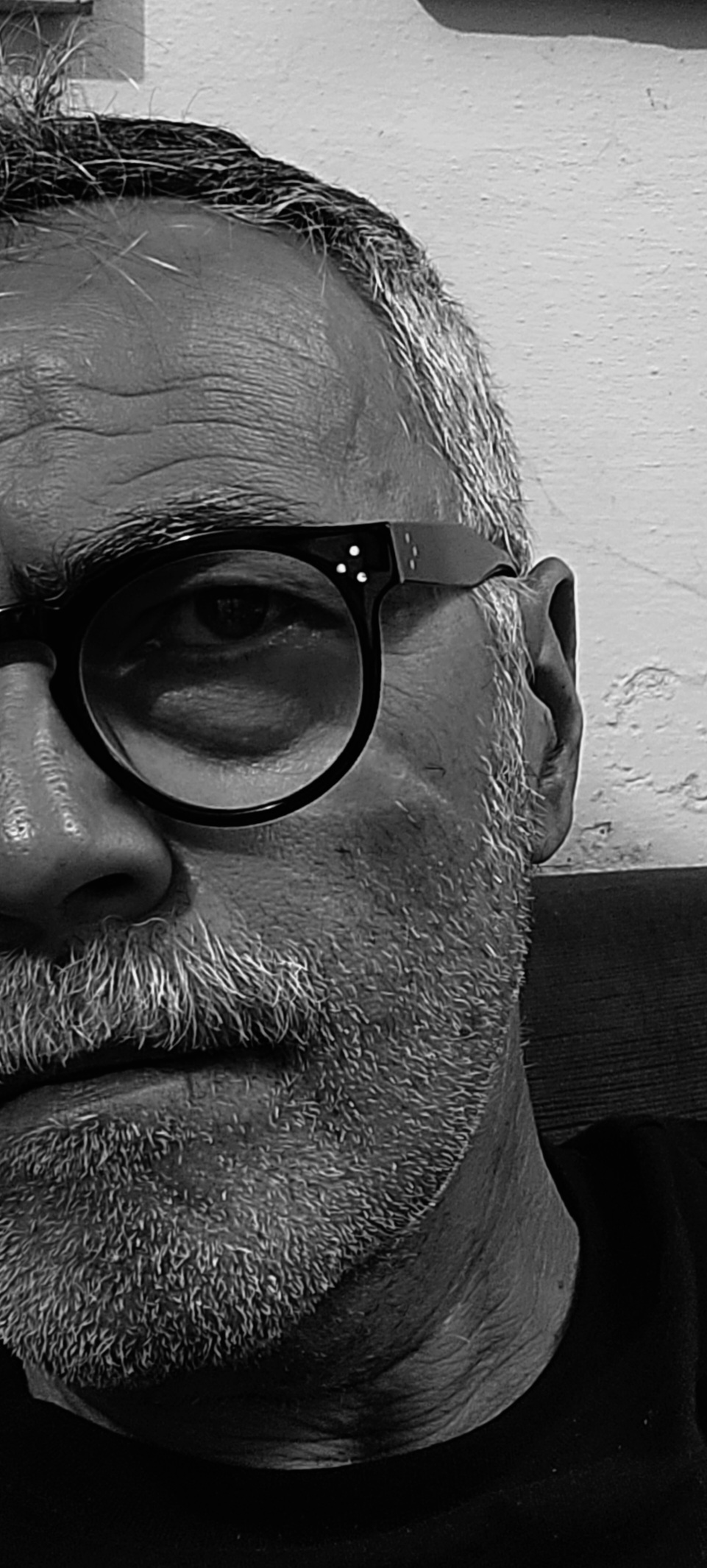
PAOLO PALLARA
L’arte di Paolo Pallara è una sintesi del paesaggio e allo stesso tempo la sintesi della vita, contiene esperienze e memorie e fa riflettere sul desiderio dell’uomo di vedere oltre il mondo sensibile e svelare il mistero di sé stesso.
La sua passione per l’arte è nata prestissimo con il disegno, già a 8 anni creava immagini legate al mondo naturale. Dall’età di vent’anni si dedica alla pittura sul tema della natura morta e poi si specializza nell’incisione. Comincia a esporre negli anni ’80 e dal 1995 si dedica pienamente alla carriera artistica nel suo studio di Ferrara. Sperimenta diverse tecniche miste su tela, spesso incollata su pannelli di legno, utilizzando principalmente l’acrilico e i pastelli a olio, il bitume e la cenere; le superfici lavorate risultano al tatto leggermente materiche. A volte crea inserti sulla tela con materiali che hanno una storia, come frammenti di libri, giornali, lettere antiche che divengono parte dell’opera d’arte.
La ricerca dell’artista muove dalla rappresentazione del paesaggio della campagna, estraendone le linee essenziali fino ad avvicinarsi al linguaggio astratto. L’orizzonte diviene il simbolo di una linea di demarcazione, che separa e unisce allo stesso tempo il mondo reale e la trasposizione sulla tela del non visibile.
Nei paesaggi simbolici rappresenta l’essenza dell’uomo composto di due parti, quella terrena e quella che va oltre la materia, e la continua necessità di cercare questa essenza per arrivare alla consapevolezza del nostro esistere. In questa continua ricerca del sé, in una tensione della scoperta delle ragioni dell’esistenza, l’arte serve per far vedere ciò che non si vede attraverso i sensi.
La linea dell’orizzonte diventa così un sentiero da percorrere, un sentiero che non ha una meta ma che ha come termine sé stessi; non è un segno netto, ma spesso si sfalda, si sgretola, ha bisogno di lentezza, come nella serie Entroterra, dipinta tra il 2022 e il 2025, dove l’orizzonte si disgrega e la parte terrena si mescola alla parte invisibile e sottile dell’uomo.
Il dualismo tra spirito e materia si riflette anche nella serie Le nostre ombre di notte realizzata negli stessi anni e nelle opere Nero e oro, dove il tema dell’orizzonte è espresso nell’essenzialità del contrasto cromatico tra i riflessi della foglia d’oro e la profondità del nero; l’uomo si muove nel mistero, frammentato nelle vibrazioni di luce che rappresentano ricordi e speranze.
Paolo Pallara si dedica anche alla scultura, con immagini di volti cristallizzati in un’attesa senza sguardo, che riprende il tema di un viaggio senza una meta terrena.
Paolo Pallara’s art is a synthesis of landscape and, at the same time, a synthesis of life. It contains experiences and memories and prompts reflection on man’s desire to see beyond the sensuous world and unveil the mystery of himself. His passion for art began very early with drawing; at the age of eight, he was already creating images related to the natural world. From the age of twenty, he devoted himself to painting, focusing on the still life theme, and then specialized in engraving. He began exhibiting in the 1980s, and since 1995, he has fully devoted himself to his artistic career in his studio in Ferrara. He experiments with various mixed techniques on canvas, often glued to wooden panels, using primarily acrylic and oil pastels, bitumen, and ash; the surfaces he works with have a subtly textured feel. Sometimes he creates inserts on the canvas with materials that have a history, such as fragments of books, newspapers, and old letters that become part of the artwork. The artist’s research begins with the representation of the countryside, extracting its essential lines until it approaches abstract language. The horizon becomes the symbol of a dividing line, simultaneously separating and uniting the real world and the transposition of the invisible onto the canvas.
In symbolic landscapes, it represents the essence of man, composed of two parts: the earthly and the part that transcends matter, and the constant need to seek this essence to reach awareness of our existence. In this constant search for the self, in a tension of discovering the reasons for existence, art serves to reveal what cannot be seen through the senses. The horizon thus becomes a path to be followed, a path that has no destination but rather its own end; it is not a clear sign, but often crumbles, crumbles, and requires slowness, as in the Hinterland series, painted between 2022 and 2025, where the horizon disintegrates and the earthly part blends with the invisible and subtle part of man. The dualism between spirit and matter is also reflected in the series “Our Shadows at Night,” produced in the same years, and in the works “Black and Gold,” where the theme of the horizon is expressed in the essentiality of the chromatic contrast between the reflections of the gold leaf and the depth of black; man moves through mystery, fragmented in the vibrations of light that represent memories and hopes. Paolo Pallara also dedicates himself to sculpture, with images of faces crystallized in a gazeless wait, which takes up the theme of a journey without an earthly destination.